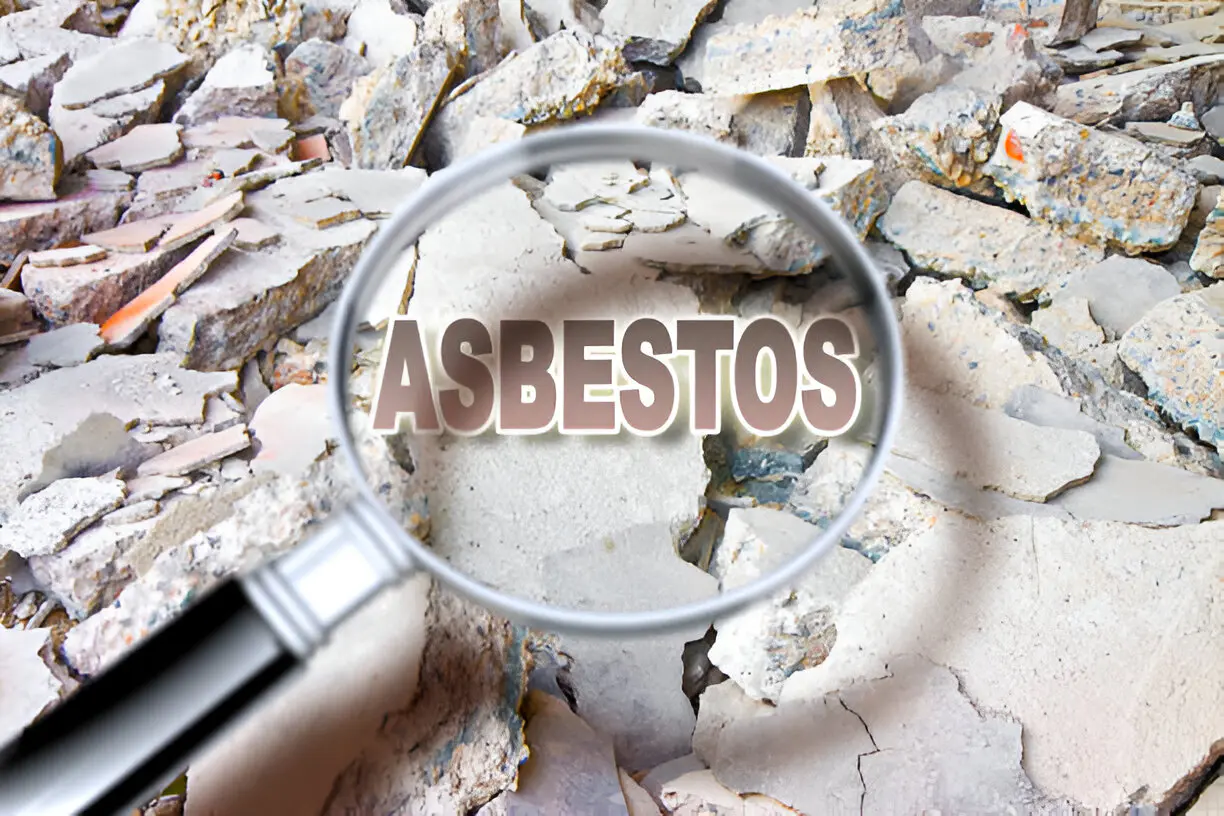Implementing an asbestos management survey is an indispensable procedure for buildings potentially harboring asbestos-containing materials (ACMs). As regulatory compliance demands stringent adherence, the survey identifies the presence of ACMs and assesses their condition and potential risks. This process, pivotal for ensuring the safety of building occupants and the surrounding environment, involves intricate methodologies and skilled professionals. Given the severe health risks associated with asbestos exposure, it is crucial to understand the key elements of the survey process and its impact on public health and safety. What are the implications for property owners and how does this affect liability and insurance, Let’s understand The Essentials of an Asbestos Management Survey.
A Brief Introduction to Asbestos
Asbestos, a naturally occurring fibrous silicate mineral, has historically been prized for its heat resistance, tensile strength, and insulating properties. Found in a variety of geological environments, asbestos is predominantly sourced from metamorphic rocks. The unique crystalline structure of asbestos fibers, which allows them to be easily separated into durable threads, is key to its many applications but also contributes to its hazardous nature.

There are two primary families of asbestos: serpentine and amphibole. Chrysotile, the only member of the serpentine family, comprises approximately 95% of asbestos used globally and is notable for its spiral fibers. Amphibole asbestos fibers are straight and needle-like, with members including amosite and crocidolite, known for their higher toxicity.
The industrial utility of asbestos stemmed from its ability to resist degradation under intense heat and chemical exposure, making it ideal for use in fireproofing, thermal insulation, and various building materials.
However, the microscopic size of its fibers, which can become airborne and easily inhaled, poses severe health risks, including asbestosis, lung cancer, and mesothelioma. This risk has led to stringent regulations regarding its use, handling, and disposal.
The Role of an Asbestos Management Survey
Conducting an asbestos management survey is essential for identifying the presence and condition of asbestos-containing materials (ACMs) in any building constructed before the year 2000. This survey serves as the primary method for assessing the risks associated with ACMs in existing structures, enabling responsible parties to manage asbestos effectively and comply with legal standards.
The fundamental role of an asbestos management survey is to ensure the safety of occupants and workers during the regular occupation and use of a building. By mapping out the location, extent, and condition of ACMs, the survey provides critical data that helps in making informed decisions about the management and potential removal of asbestos.
This proactive approach is crucial not only for maintaining health and safety but also for avoiding legal repercussions that might arise from non-compliance with asbestos regulations.
Moreover, the survey underpins the development of a detailed asbestos management plan. This plan outlines procedures for regular inspections, risk assessments, and the handling of asbestos-related incidents.
It ensures that all ACMs are kept in a safe condition, and any deterioration can be addressed promptly to prevent the release of harmful asbestos fibers into the environment.
Essential Elements of an Asbestos Management Survey
A comprehensive asbestos management survey incorporates several critical components to ensure thoroughness and compliance with safety regulations. Firstly, it involves a detailed inspection of the building or premises to identify the presence of asbestos-containing materials (ACMs). This requires a meticulous visual examination and the collection of samples from various materials suspected to contain asbestos.
Each sample is then analyzed in a laboratory with specialized microscopy techniques, such as polarized light microscopy (PLM) or transmission electron microscopy (TEM), to confirm the presence and type of asbestos.
The survey also includes an assessment of the condition of these materials. This aspect evaluates the ACMs for any damage or deterioration, which could increase the risk of asbestos fiber release into the air.
The surveyor must document the exact location, extent, and type of ACMs found, integrating this data into a comprehensive asbestos register. This register is crucial for managing asbestos safely, serving as a reference for any future maintenance work or renovation.
Moreover, the survey must outline specific management plans and recommend remedial actions, if necessary, to mitigate any identified risks. This includes prioritizing removal or containment strategies based on the ACMs’ condition and potential for disturbance, ensuring ongoing safety and regulatory compliance.
Who Should Consider an Asbestos Management Survey?
Anyone responsible for the management of facilities, particularly those constructed before the year 2000, should consider an asbestos management survey as a critical element of their property maintenance and safety protocols.

This primarily includes property managers, facility managers, and owners of commercial, industrial, or residential buildings that pre-date the 21st century. Schools, hospitals, and governmental buildings are also prime candidates for such surveys due to the extensive use of asbestos-containing materials in past construction practices for fireproofing, insulation, and other applications.
Real estate developers and construction firms involved in refurbishing or demolishing older properties should also prioritize asbestos surveys to comply with health and safety regulations and avoid legal liabilities.
Landlords, particularly those with a portfolio of older properties, must undertake these surveys to ensure tenant safety and regulatory compliance.
Institutional leaders, such as school district superintendents or hospital administrators, must also consider these surveys essential to safeguard the health of the occupants.
The duty to manage asbestos, mandated by safety regulations, underscores the importance of identifying and assessing the presence of asbestos-containing materials.
Failure to conduct such surveys can result in significant health risks and severe penalties under safety laws.
What to Anticipate During the Survey Process
Initiating an asbestos management survey typically involves a comprehensive evaluation performed by certified professionals who meticulously inspect the property for asbestos-containing materials.
During the survey process, property owners should prepare for an extensive assessment of all accessible areas, including underfloor spaces, above false ceilings, and within wall cavities. The survey team will document the condition and location of any suspected materials, noting the extent of any deterioration or damage that might influence the release of asbestos fibers.
Clients should expect minimal disruption, though some access to normally occupied spaces will be necessary. Occupants must be informed beforehand to secure safety and cooperation.
The surveyors will also review building plans and maintenance records to correlate historical data with their physical findings, enhancing the accuracy of their assessment.
Throughout the process, communication with the survey team is vital. They will provide regular updates and preliminary findings, offering insights into potential areas of concern.
After the physical inspection, a detailed report will be prepared, summarizing the findings, assessing the risk, and providing recommendations for managing or removing identified asbestos-containing materials. This report is critical for compliance with health and safety regulations and for future property management strategies.
Methods and Tools for Detecting Asbestos
To accurately detect the presence of asbestos in building materials, professionals employ a variety of specialized tools and methodologies. The primary method involves taking samples of suspect materials and analyzing them in a laboratory setting using polarized light microscopy (PLM) or transmission electron microscopy (TEM). PLM can distinguish asbestos fibers from non-asbestos fibers by their optical properties, while TEM offers higher magnification and resolution, essential for identifying finer fibers and confirming the presence of asbestos in air and dust samples.
Field detection also plays a critical role in asbestos surveys. Tools such as portable X-ray fluorescence (XRF) analyzers enable rapid, on-site screening of building materials to assess their composition. This method, however, does not confirm the presence of asbestos but indicates potential areas where asbestos-containing materials (ACMs) are likely. Here is a table summarizing some key methods and tools used in asbestos detection:
| Method/Tool | Description | Application |
|---|---|---|
| Polarized Light Microscopy (PLM) | Optical method to identify fiber types | Material samples |
| Transmission Electron Microscopy (TEM) | High-resolution imaging for fiber identification | Air, dust, and material samples |
| X-ray Fluorescence (XRF) | Non-destructive chemical analysis | Preliminary site assessment |
| Bulk Sampling | Collection of material samples | Confirmatory analysis |
| Visual Inspection | Manual examination of materials and structures | Preliminary identification |
Implementing these methods demands meticulous execution by trained professionals to ensure accurate and reliable results, critical for effective asbestos management and mitigation strategies.
Understanding Legal Obligations and Compliance
Understanding the legal obligations and compliance requirements associated with asbestos management is critical for property owners, employers, and contractors. Asbestos-related legislation, primarily aimed at preventing health risks, mandates thorough identification, risk assessment, and management of asbestos-containing materials (ACMs) in buildings. Non-compliance can result in severe legal penalties, including fines and imprisonment.
In many jurisdictions, the duty holder must ensure an asbestos management plan is in place, clearly documenting the location, condition, and type of ACMs. This plan must be regularly updated and readily accessible.
Additionally, any work involving ACMs requires adherence to strict safety protocols, including the use of accredited professionals for asbestos surveying, removal, and disposal.
Furthermore, regulatory frameworks often require that all persons potentially exposed to asbestos risk are adequately trained. This includes maintenance staff and contractors who might disturb the building fabric during their work. Their training should cover asbestos awareness and specific methods for handling or avoiding ACMs.
Recording and reporting any asbestos incidents or discoveries to relevant authorities is also mandated. This documentation helps maintain transparency and ensures a systematic approach to managing asbestos risks, aligning with legal standards, and safeguarding public health.
Why Regular Asbestos Surveys Are Crucial for Safety
Regular asbestos surveys stand as a fundamental practice in maintaining safety within any building that potentially harbors asbestos-containing materials (ACMs).
Conducting these surveys routinely is not only a regulatory requirement but a critical measure to prevent asbestos exposure, which can lead to serious health issues including asbestosis, lung cancer, and mesothelioma.
The necessity of these surveys stems from the properties of asbestos, which when disturbed, release fibers that can be inhaled by occupants.
Key reasons why regular asbestos surveys are crucial include:
- Early Detection: Timely identification of ACMs before they deteriorate and become a health hazard.
- Risk Management: Detailed assessments help in formulating a management plan that ensures safe handling and removal of asbestos.
- Compliance with Health and Safety Regulations: Adherence to legal standards protects against legal liabilities and ensures the safety of building occupants.
An effective asbestos management survey involves not only the initial detection but also periodic re-evaluations to monitor the condition of identified ACMs and the effectiveness of control measures.
This proactive approach is essential in maintaining a safe environment, minimizing health risks, and upholding the structural integrity of the property.
Conclusion
In conclusion, the asbestos management survey is a pivotal mechanism for ensuring environmental safety and legal compliance in properties potentially harboring asbestos-containing materials. Through meticulous inspection, sampling, and assessment, this survey facilitates the identification and effective management of asbestos risks. Regular implementation of such surveys is indispensable, safeguarding occupant health and maintaining structural integrity. Stakeholders must recognize the critical nature of these surveys in upholding safety standards and adhering to regulatory requirements.









